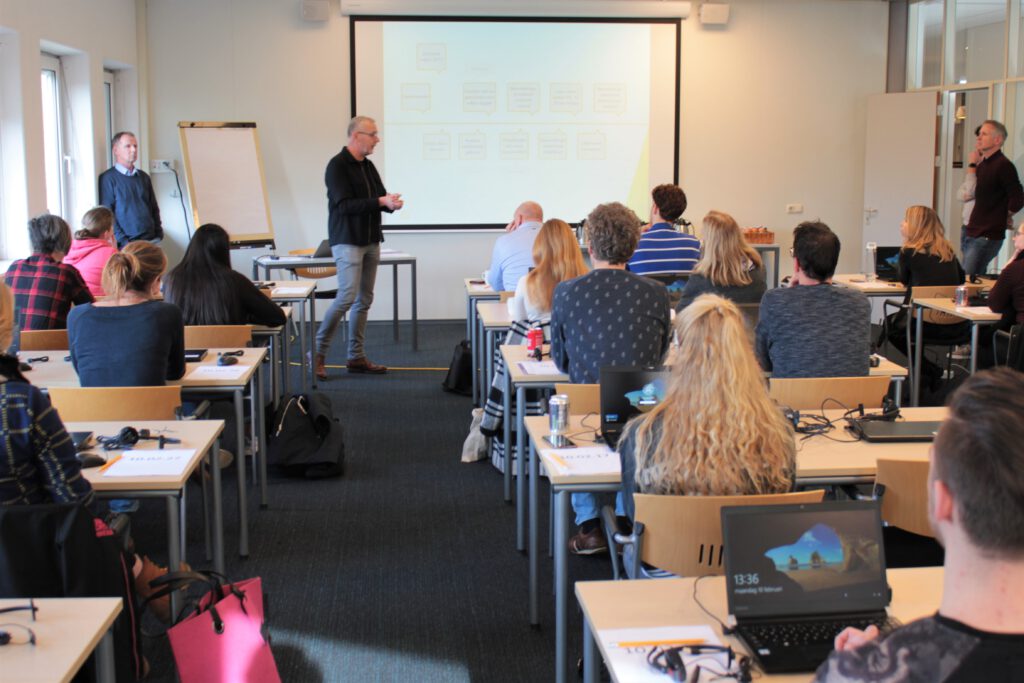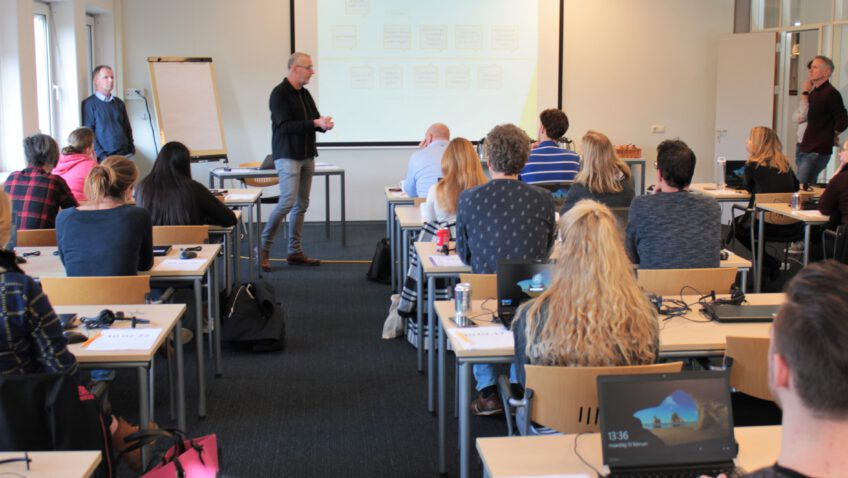Next year Windesheim will transfer to a new ´learning management system´: Brightspace. In September the first study programmes will start using Brightspace. The current electronic learning environment, N@tschool, shuts down in September 2022.
The contract with N@tschool’s provider ends next academic year. Following research into the user requirements for the best successor, the choice fell on the Brightspace system made by software company D2L, says project manager Erik Bolhuis. He started the preparations for the transfer last month.
“Brightspace is a ‘learning management system’ (LMS). LMS is the new term for learning environment, which we’ll now use instead of the outdated term ELO (electronic learning environment).”
Right direction
For Windesheim users Brightspace will be called ‘MijnRijkeLeeromgeving’. “That name refers to the opportunity to provide a huge amount of diverse study materials. That way students can choose within modules between readers, articles and videos or questions through which the student can test their prior knowledge or work together with fellow students.”
Bolhuis thinks Windesheim is moving in the right direction by choosing Brightspace: “Students and especially lecturers are given a tool that helps support studying.”
Three Teams
The project manager is working with three teams to prepare the transition from N@tschool to ‘MijnRijkeLeeromgeving’. The first team is going to integrate the LMS into the digital environment. “These are people from the IT service who work on the login system or how results are registered.”
The second team deals with the design of the LMS. This team consists mostly of experts from the divisions (including an expert on ease of use from the Business, Media and Law Division). “They look at the situation from different use cases to see what can be improved. In doing so, they try to look from both a student and a lecturer’s point of view so to see which options are most desirable.”
Will this team also speak with ‘regular’ students and lecturers who will have to utilise the system? Bolhuis: “The lecturers that took part in the preliminary research will receive a survey about the design. Besides that, we’ll make options for the homepages and navigation, which we’ll run by lecturers and students.”
The third team focuses on the implementation of the LMS. “This team is made up of the project managers from the study programme divisions. They look at what is needed with regards to professionalisation and support within the study programme teams, communication and how the implementation is actually going to take shape.”
Transfer
The starting point for the transfer will be the moment students from a study programme start working in ‘MijnRijkeLeeromgeving’. Lecturers prepare that start by transferring materials from N@tschool and organising them in ‘MijnRijkeLeeromgeving’.
At the moment, Bolhuis is in talks with various study programmes to see which ones want to start at what point. In all likelihood, only a small portion will start this September. The study programmes can choose between three starting points: the first group starts at the beginning of the next academic year. The second group starts at the beginning of the second semester. The rest starts at the beginning of the ‘22/’23 academic year.
There were many complaints about the user-friendliness of N@tschool when the current ELO was introduced. To which degree is the Brightspace software user-friendly compared to other ELO/LMS?
Bolhuis: “Eight other universities and universities of applied sciences have preceded us in switching to Brightspace so we can utilise their experiences. We have extensive contact with three universities and universities of applied sciences that have already introduced the system. That introduction went much smoother than expected, especially for students.”
Usage situations
The project team wants to develop ‘MijnRijkeLeeromgeving’ step-by-step. “We formulate the acceptance criteria first, based on usage situations, among others. After that, we develop per section and test that using the acceptance criteria. We evaluate that in a small group (IT-employees) and then in a bigger group. Then we go ‘live’ and after that, we can let the users evaluate it.”
At the moment, Windesheim is busy innovating and connecting all systems of the ‘Digital Campus’. Within that digital campus ‘MijnRijkeLeeromgeving’ will be an essential part. Bolhuis: “It’s the bearer and the environment for learning. When a lecturer or student uses their computer for study purposes, 80 to 90% of that will take place in the LMS. Other applications on the digital campus support learning and the educational logistical process, but are less used.”
What preceded the choice for Brightspace?
Windesheim’s choice for Brightspace as their LMS wasn’t an overnight decision. Since an LMS is of vital importance for its users, the project team, led by Erik Bolhuis, has spent the last year doing extensive preliminary research.
We ran the user tests with the help of almost 150 lecturers and students. After that, an assessment committee described all typical LMS situations that are important to lecturers and students. Those ‘user situations’ were key in finding a contractor, at which point a choice was to be made between three applications.
Bolhuis: “Brightspace was better than the other applications. Students gave it the highest score in 12 out of 17 cases. Teachers gave it the highest score in 7 out of 11 cases. We also wanted the application to complement the other systems of the digital campus, so that was a criterion as well.”
The result of the user tests also provided the project team with some useful ‘homework’ to further improve Brightspace. “There were also a few situations in which students and lecturers preferred other applications. For example, forming groups and looking through parts of a portfolio. So we are going to see if we can improve on that when designing ‘MijnRijkeLeeromgeving’”, says Bolhuis.

